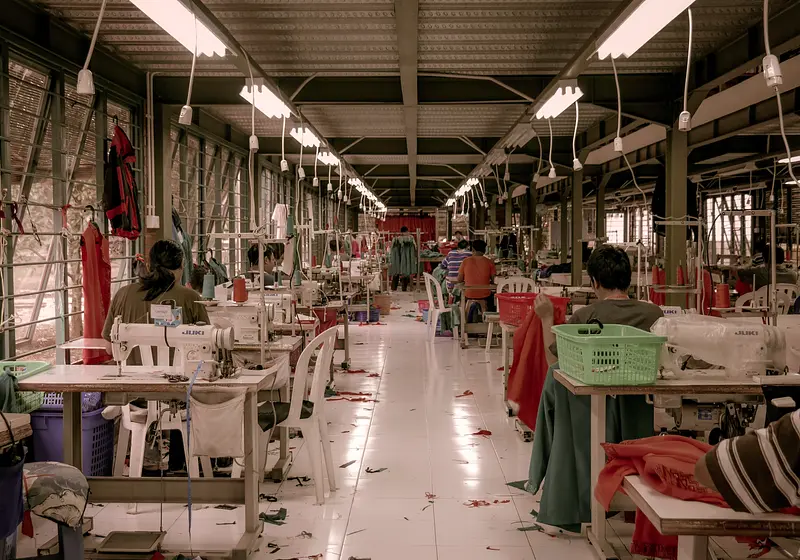Fashion is the second most polluting industry in the world after oil. Let that sink in. Out of all the industries across the globe that contribute to our environment's downfall every day, fashion is right up top with big oil companies.
From fast fashion to haute couture — there is a lot to unpack, but fear not! Here is your guide to the fast fashion industry's effect on the environment and how you can combat this pressing issue.
Let us slide into your dms 🥰
Get notified of top trending articles like this one every week! (we won't spam you)Water pollution and consumption
Have you ever thought about what it takes to make the clothes you're wearing right now? The reality is that most items of clothing cost our planet valuable resources and add to environmental pollution. For example, the treatment and dyeing of textiles cause 20% of all industrial water pollution. This means that your favorite blue top may be partially responsible for the gallons and gallons of toxic water currently flowing through the environment.
Additionally, making clothing requires A LOT of fresh water, as in 1.5 trillion liters worth per year. This is particularly troubling considering there are millions of people who are living without reliable access to clean water. And for all the 'Save the Sea Turtles' enthusiasts, did you know that 190000 tons of microplastics end up in the ocean annually due to textiles? These microplastics can be extremely dangerous for sea life and anyone who consumes seafood.

Take the Quiz: Which ’90s Movie Character Are You?
Are you ready to travel back to the iconic ’90s and discover which unforgettable movie character matches your personality? Take this quiz to find out!
Fashion waste
Every year there are new fashion trends, and every year millions of people clean out their wardrobe to make room for the latest in-style pieces. With only 15% of our clothing being recycled or donated, discarded clothing consumes landfills. This is 5.2% of the waste in landfills, to be more precise. While this type of waste is mostly associated with fast fashion, luxury brands are also guilty of producing large amounts of waste from unused or scrap fabrics.
Deforestation
While it is not widely known, the fashion industry contributes to the deforestation of many forests worldwide. Every year, 70 million trees are cut down to make room for plantations used to make wood-based fabrics, including rayon, viscose, and modal. The destruction of these forests leads to dying ecosystems, putting wildlife at risk.
The emission of greenhouse gases
The emission of greenhouse gases may be one of the most commonly talked about reasons for climate change. Unfortunately, the fashion industry is no stranger to producing these gases. 23 kg of greenhouse gases are created for every kilo of fabric that's made (which adds up very quickly). Annually, 70 million barrels of oil are used to produce polyester, which is found in many clothing items.
How you can help
While all of this information may seem overwhelming, there are simple steps you can take to reduce the strain that the fashion industry is placing on our planet. It is essential to think about what you are buying and what brands you are buying from. Do some research and look for more eco-friendly brands.
Also, be sure to refrain from purchasing items that are similar to ones you already own or that you will become bored with once a new trend pops up. It is often beneficial to purchase clothes made from higher quality materials (not synthetic) if you buy new items. These are usually less tough on the environment.
Better yet, go thrifting and give exciting pieces a new home in your closet. Also, be sure to donate or recycle any clothes you no longer wish to keep in your wardrobe. Despite the fashion industry seeing improvements in recent years, we are only a portion of the way to where we need to be to truly make fashion sustainable.












